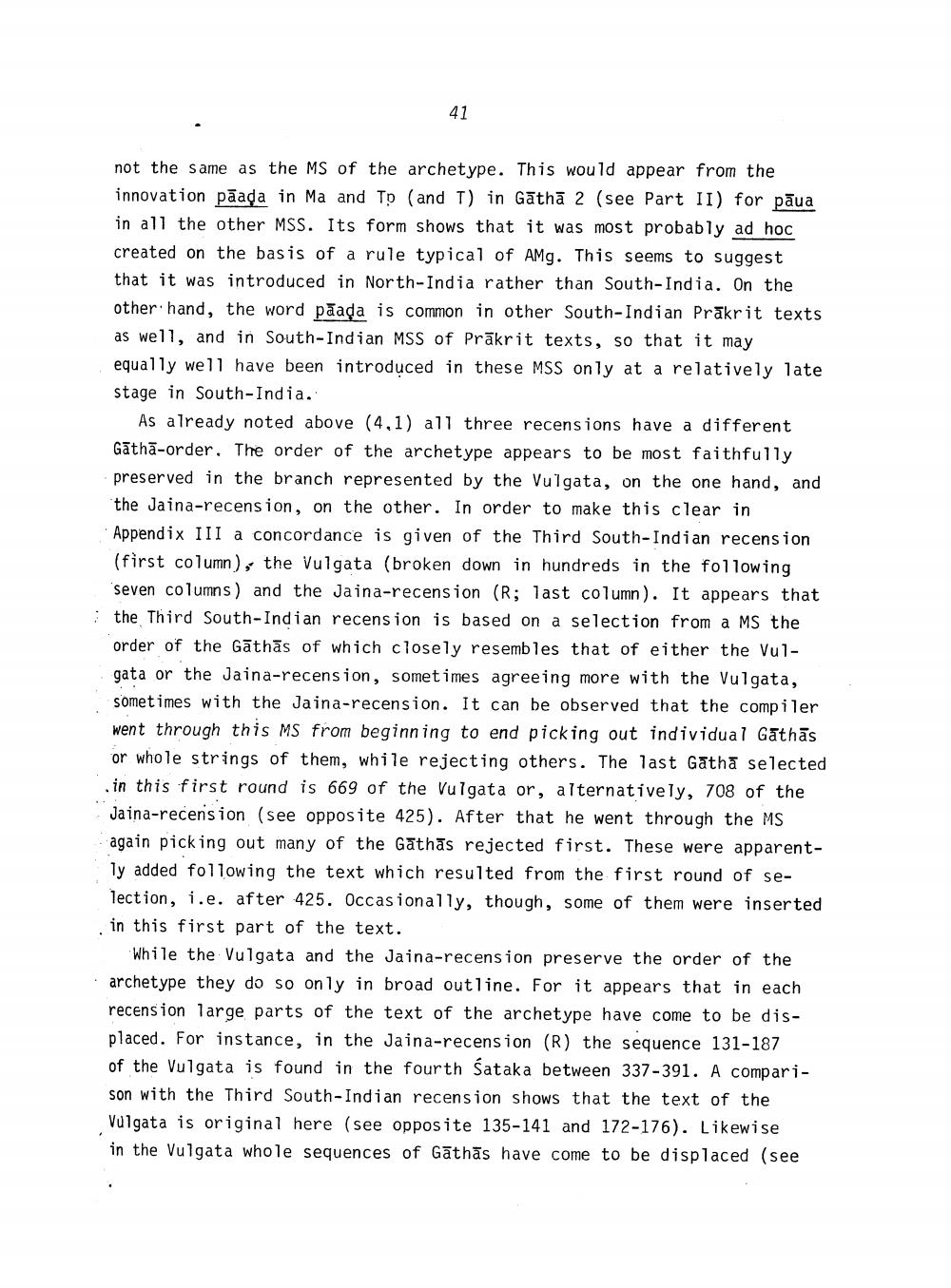________________
not the same as the MS of the archetype. This would appear from the innovation pāada in Ma and Tp (and T) in Gathā 2 (see Part II) for pāua in all the other MSS. Its form shows that it was most probably ad hoc created on the basis of a rule typical of AMg. This seems to suggest that it was introduced in North-India rather than South-India. On the other hand, the word pāada is common in other south-Indian Prākrit texts as well, and in South-Indian MSS of Prākrit texts, so that it may equally well have been introduced in these MSS only at a relatively late stage in South-India.
As already noted above (4.1) all three recensions have a different Gāthā-order. The order of the archetype appears to be most faithfully preserved in the branch represented by the Vulgata, on the one hand, and the Jaina-recension, on the other. In order to make this clear in Appendix III a concordance is given of the Third South-Indian recension (first column), the Vulgata (broken down in hundreds in the following seven columns) and the Jaina-recension (R; last column). It appears that the Third South-Indian recension is based on a selection from a MS the order of the Gathās of which closely resembles that of either the Vulgata or the Jaina-recension, sometimes agreeing more with the Vulgata, Sometimes with the Jaina-recension. It can be observed that the compiler went through this MS from beginning to end picking out individual Gathās or whole strings of them, while rejecting others. The last Gātha selected in this first round is 669 of the Vulgata or, alternatively, 708 of the Jaina-recension (see opposite 425). After that he went through the MS again picking out many of the Gathās rejected first. These were apparently added following the text which resulted from the first round of selection, i.e. after 425. Occasionally, though, some of them were inserted in this first part of the text.
While the Vulgata and the Jaina-recension preserve the order of the archetype they do so only in broad outline. For it appears that in each recension large parts of the text of the archetype have come to be displaced. For instance, in the Jaina-recension (R) the sequence 131-187 of the Vulgata is found in the fourth Sataka between 337-391. A comparison with the Third South-Indian recension shows that the text of the Vulgata is original here (see opposite 135-141 and 172-176). Likewise in the Vulgata whole sequences of Gāthās have come to be displaced (see




